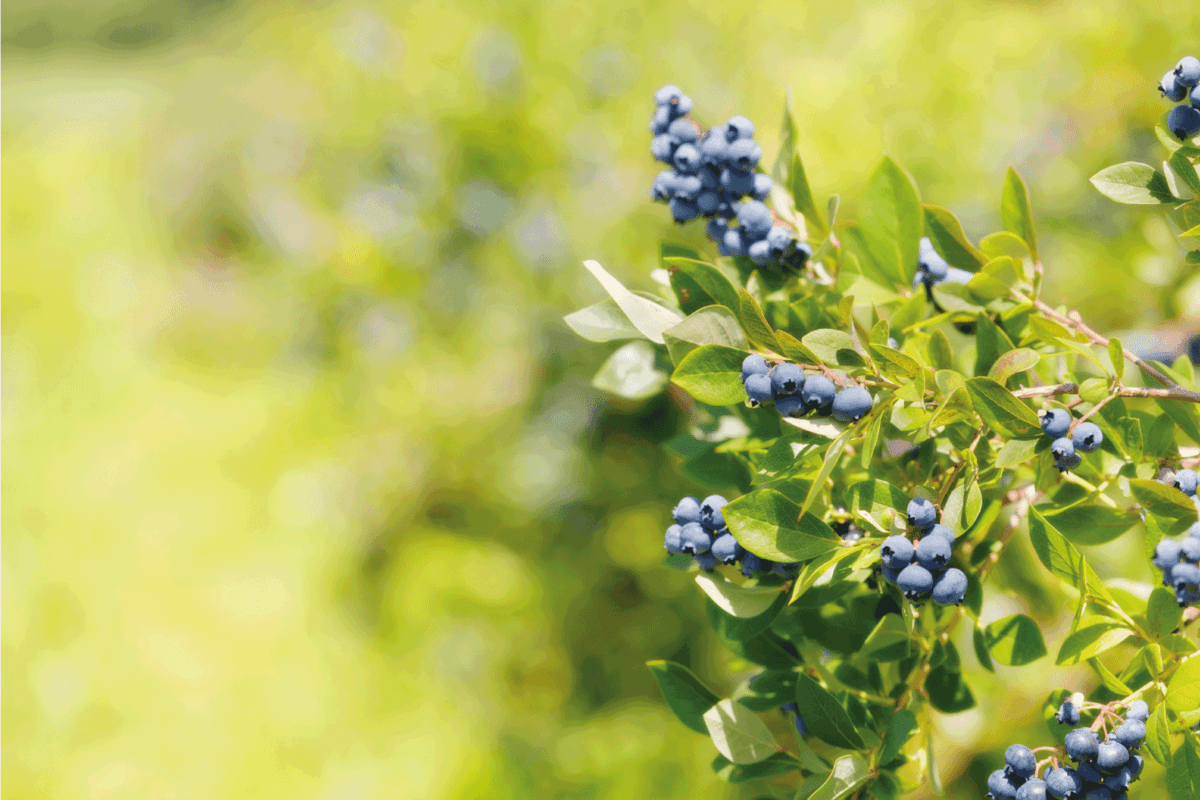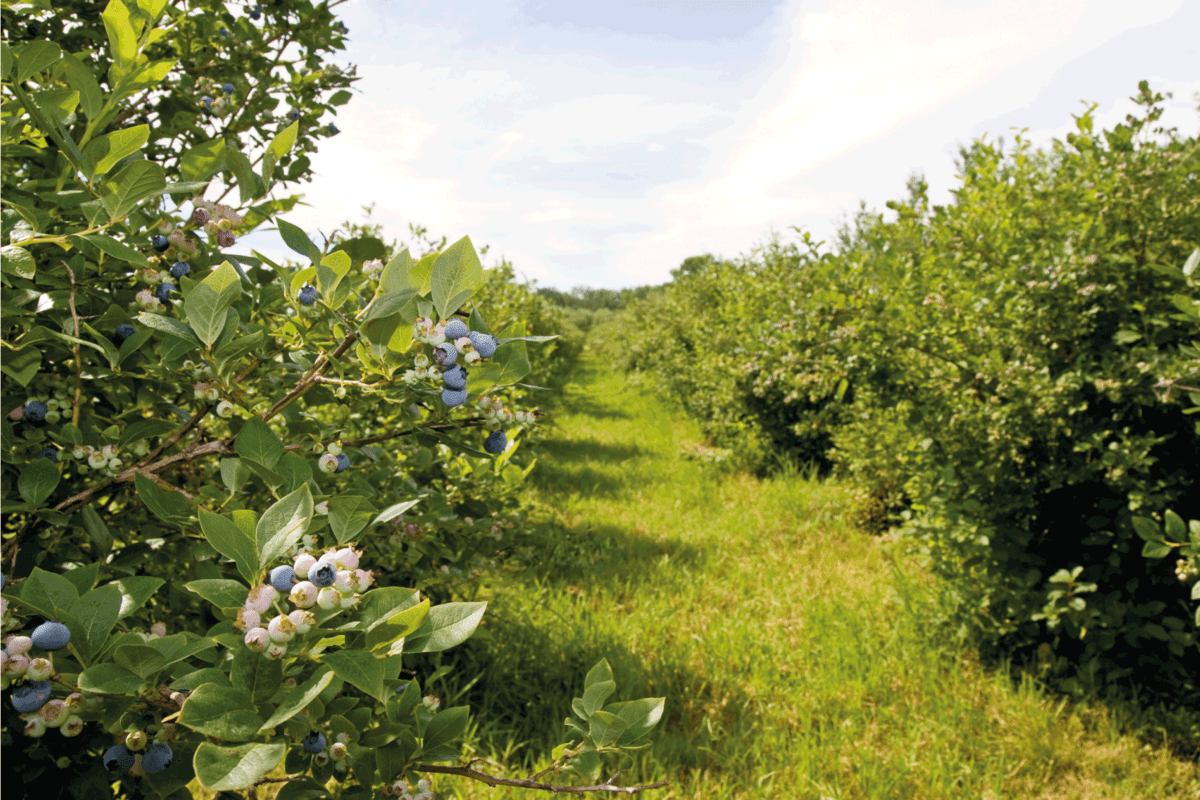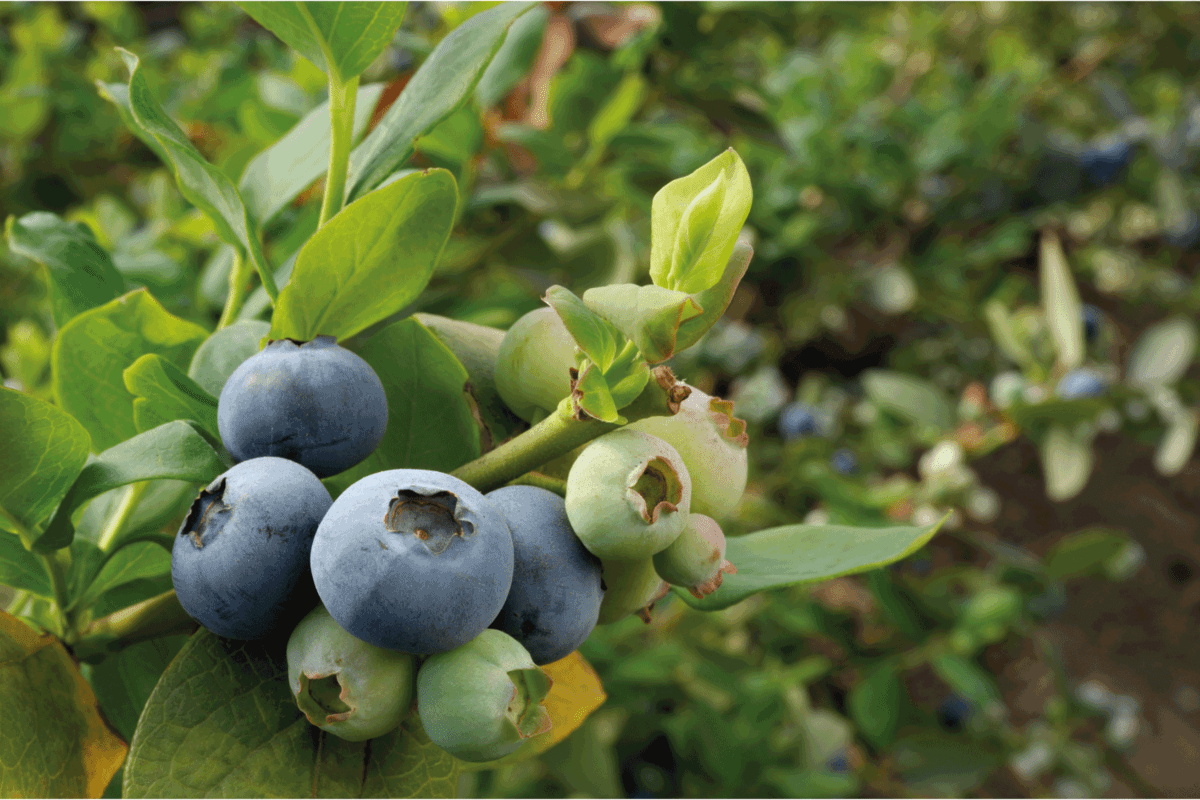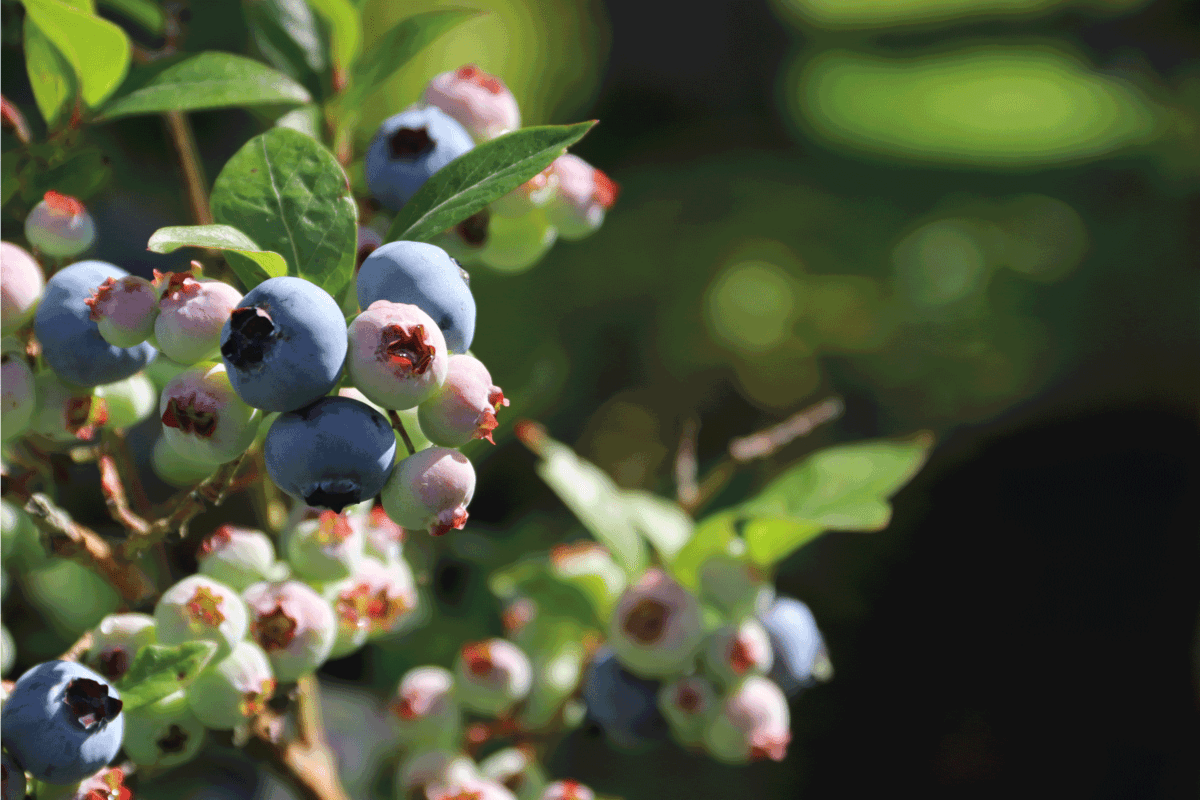Not only are blueberries delicious, but the plant is also a beautiful flowering perennial shrub. Blueberries thrive in full sun and acidic soil and make a great addition to any edible garden. Transplanting blueberries is a need if your plant isn't doing well in its current location or you are cultivating a garden on another part of your landscape. We did the research to break down the best time to transplant your blueberries and what the process will entail.
Blueberries need to be transplanted when the shrub is dormant. To give your plant time to recover before the growing season, you should transplant in late fall or early spring to avoid the harshest frosts.
You now know when to transplant your blueberries, but what is the best way to complete the task? Keep reading as we break down how to transplant blueberries and talk about the lifespan of this shrub.
![close up photo of a blueberry fruit on a bush. When To Transplant Blueberries [And How To]](https://gardentabs.com/wp-content/uploads/2021/10/close-up-photo-of-a-blueberry-fruit-on-a-bush.-When-To-Transplant-Blueberries-And-How-To.png)
How To Transplant Blueberries
When a blueberry plant is dormant, you will see leaf drop and no active growth. The exact month or period of dormancy for your plant can change slightly depending on where you live.
Typically, this period is somewhere between November and March. Once your plant is dormant, no long freezes are coming, and you have the location where your blueberries will go, it is time to transplant.

To transplant your blueberries, follow these steps:
- Pick out a new garden location with full sun and acidic soil.
- Dig a wide perimeter around each shrub. The perimeter needs to be wide and deep enough to get under the plant and roots of your bush.
- Use a shovel to scoop under the root ball of each shrub, removing the plant from the ground with little damage to the roots.
- Prep the new garden by digging a hole for each shrub you are transplanting. The holes should be at least 6 inches (ca. 15 centimeters) wider than the root ball of your plant and watered at the bottom.
- Transfer your plants into the new holes in an upright position and fill the remaining space with soil.
- Cover the topsoil with mulch and add fertilizer to each plant.
- Water your plants as needed.
You can find an all natural acid mix fertilizer for your blueberry plants here on Amazon.
A sharp shovel is ideal for transplanting as it will damage less of the root system. You can find a sharp digging shovel here on Amazon.
By following these steps and transplanting your blueberries at the right time of year, you will be able to enjoy the flowers and fruit come next growing season. The video below shows you the steps to transplanting blueberries and some additional insights into when the best time to transplant is.
How Do You Transplant Blueberry Shoots?
Blueberry shoots come up out of the ground, away from the base of the plant. These shoots can be transplanted, just like the main shrub. You will need to carefully dig up the shoot with the roots attached. Before transplanting, prune back the stem to allow the roots to focus all energy on new growth.

Blueberry bushes can be cultivated by utilizing cuttings from an existing plant. Cut a healthy shoot from your bush sometime in early Spring. Cut off a few inches of that season's growth from your shoot, 5 inches (ca. 13 centimeters) is typically sufficient.
Remove all the leaves except two or three at the top of the shoot. Immediately move the shoot into moist, nutrient-rich soil, never allowing it to dry out completely.
Read more on our blog post, “How Much Fertilizer Should You Use For Fruit Trees?”
Can Mature Blueberry Bushes Be Transplanted?
You can transplant mature blueberry bushes. The process of transplanting these shrubs is much easier with younger plants due to root and plant size, but the same process can be done with older blueberry bushes; it just takes a little more effort.
Mature blueberries may need to be transplanted if the bush has gotten to large for the current location, or you are rearranging your landscape.

Blueberry plants that have been growing for multiple years can be more difficult to remove from the ground. You'll need to dig a much larger perimeter and may need the help of a friend or wheelbarrow to move the plant with its large root ball to the new location.
Mature blueberries follow the same rules of transplanting we discussed. The process needs to be done while the plant is dormant and in a period with no long freezes or frosts.
Additional Tips For Transplanting Blueberries
Blueberries can be transplanted as young or mature plants, by shoots and even by clippings. In any case, there are some tips and tricks that can help promote your plants' health and ability to grow.

When moving these plants, you want them to be going to a site with acidic soil. Don't have soil in your landscape that meets this need? You can add acidic fertilizer or change the soil by adding peat moss and un-limed sand.
You can find a 10 quart (ca. 9 liter) bag of peat moss here on Amazon.
The hole you dig for your plant is typically 10-15 inches deep, depending on the size of your shrub and its roots. To make soil conditions even better for your blueberries, you can add composted pine bark, peat moss, or sawdust in the bottom of this hole before transplanting.
Amazon offers 1 pound (0.45 kilograms) of chemical-free sawdust here.
Mulching the top layer of soil around your newly transplanted berries can help protect the soil and keep moisture in the environment. This layer of mulch can be made up of sawdust, wood chips, pine needles, or any other leaves you find lying around your landscape.
How Deep Do Blueberry Roots Go?
You need to be familiar with the root system of your blueberry bush to do a successful transplant. Blueberry roots are generally shallow, typically not going deeper than 10 inches (ca. 25 centimeters) into the ground. These shallow roots make the process of digging out the root ball easier compared to many other plants.

One downfall to this shallow root system is it can be quite sensitive to fluctuations in moisture. Ninety-percent of the root system of a blueberry bush will be found in the plant's canopy and includes thin individual roots. Take care when transplanting to minimize the damage done to the root system, giving your blueberry bush the best chance of surviving and thriving.
Read more on our blog post, “15 Fruit Trees With Non-Invasive Roots.”
Can You Split A Blueberry Bush?
You can split a blueberry bush, but at what cost? Splitting a blueberry bush can set back growth severely and increase the chances of your plant dying or being stunted. If you do decide that you want to split, there are some precautions you can take.

You will still dig up the entire root ball when splitting. Once the root system is above ground, you can gently tease the root system apart, ensuring that each split piece has plenty of healthy roots attached.
You will want to get your plant into the ground soon after splitting. Right before transplanting into the new hole, you can apply rooting powder or compound to your roots to promote health and growth.
Amazon offers a rooting gel compound here.
Learn more on our blog post, “What Is The Best Time To Graft Fruit Trees?”
What Is The Lifespan Of A Blueberry Bush?
Blueberry plants are one of the most popular fruits to be cultivated in a home garden, and there are plenty of reasons for that. One of those reasons is the long lifespan of blueberry bushes. If these plants live in ideal conditions and locations, you can expect these bushes to live and produce for up to 50 years.

Ideal conditions for this long-living fruit include well-draining, acidic soil, a lot of sun, and rich organic material added to the soil. Enjoy fruit in the Summer, flowers in the Spring, and colorful branches in the Winter for many years to come.
In Summary
Blueberries need to be transplanted when the shrub is dormant. This stage typically falls between the months of November and March, depending on where you live. Blueberry plants can be transplanted by the entire bush, shoots, or from clippings.
These plants have shallow roots and enjoy acidic soil with a lot of sun. The long-living plant gives you berries for years and offers flowers and colorful branches in between growing seasons. We hope you found this article helpful when transplanting blueberry plants of your own, and you get some tasty berries to enjoy come Summer.
Are you looking for more inspiration when it comes to growing fruit? Have a look through our blog post, “What Fruit Can You Grow Indoors?”





